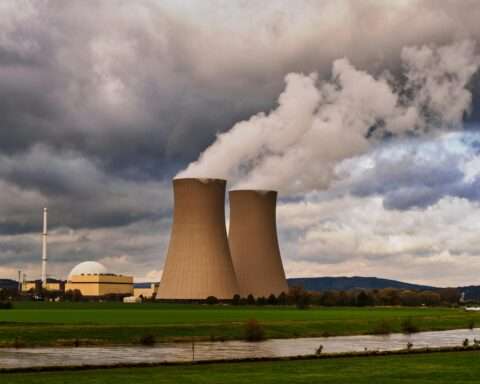The U.S. Department of Interior (DOI) is announcing a $71 million investment to electrify homes in tribal communities across Indian Country. Furthering climate action in local and tribal regions, the funding will help tribes’ access to electricity and supplement the DOI’s commitment to electrifying all homes in the U.S. with clean energy.
Through the DOI’s Bureau of Indian Affairs (BIA), the grants will provide financial and technical assistance to tribes as they address electrification concerns that have left households without power. Awardees will use this federal funding and assistance to connect homes to clean energy transmission and distribution systems.
RELATED: EPA granting $300 million to tribal, territorial climate change projects
Additionally, the grants will focus on equipping unelectrified homes with zero-emissions energy systems, while supporting necessary home repairs and retrofitting for electric connectivity.
“We’re honoring our commitment to deliver clean energy to Indian Country to electrify more homes,” Secretary of the Interior Deb Haaland says in a press release. “This new program is building reliable, resilient energy that Tribes and communities can rely on, and advancing our work to tackle the climate crisis and build a clean energy future.”
The investment, drawn from the Inflation Reduction Act, represents the second and final round of funding through the BIA’s Tribal Electrification Program (TEP). Allocated $150 million for grants and administrative expenses, the program delivers funding opportunities to tribes for clean energy electrification initiatives, primarily targeting American Indian and Native Alaskan households in underserved communities.
Through partnerships with the U.S. Department of Energy and the U.S. Department of Agriculture, the TEP program and its grants aim to enhance reliable energy access in Tribal communities, addressing a critical need for safe and dependable electricity.
Projects utilizing this federal funding will address a variety of electrification efforts designed specifically for each tribe’s unique energy-related needs and implementation capacities.
Some of the approved initiatives under this round of the TEP program include: the provision of electricity to unelectrified tribal homes with zero-emissions energy systems, transitioning existing electrified tribal homes to zero-emissions and associated home repairs and retrofitting necessary to install the zero-emissions energy systems.
The funding for this round will be distributed among various tribes across the country. Leading all states, the BIA will fund three projects in Alaska, totaling over $12.3 million. States with two tribe electrification projects include Arizona, California, Minnesota and South Dakota.
The tribe projects funded in this second and final TEP round include:
- Rosebud Sioux Tribe (South Dakota) – $11.85 million
- Red Lake Band of Chippewa Indians (Minnesota) – $8.73 million
- Navajo Tribal Utility Authority (Arizona, New Mexico and Utah) – $7.37 million
- Eastern Shoshone Housing Authority (Wyoming) – $7.37 million
- Bois Forte Band of Chippewa (Minnesota) – $6.48 million
- Hopi Utilities Corporation (Arizona) – $6.06 million
- Kootznoowoo, Incorporated (Alaska) – $5.99 million
- Yurok Tribe (California) – $4.3 million
- Quinault Indian Nation (Washington State) – $3.95 million
- Levelock Village (Alaska) – $3.31 million
- Tanana Chief Conference (Alaska) – $3 million
- SAGE Development Authority, Standing Rock Sioux Tribe (North Dakota and South Dakota) – $2 million
- Ewiiaapaayp Band of Kumeyaay Indians (California) – $560,000
The first round of TEP funding saw 21 tribes and tribal organizations receive $72 million from the DOI and BIA. Notably, the Pueblo of Santa Ana and the Navajo Tribal Utility Authority were awarded the largest allocations with $14.5 million and $10 million, respectively.
The second TEP funding opportunity announcement was released in May and closed in June. Officials anticipate releasing the second round of awarded funds to selected tribes by Dec. 19.
For more information and resources on the TEP program and other TEP award selections, including an interactive map, see the BIA’s TEP Inflation Reduction Act Program Plan and the Funding for Bipartisan Infrastructure Law and Inflation Reduction Act Projects by Fiscal Year map.
Historically, access to electricity on Native American reservations has lagged behind the national average. In 2000, the Energy Information Administration reported that approximately 14% of households on these reservations were without electricity, a figure ten times higher than the national nontribal rate. Recent data from a Department of Energy Office of Indian Energy report from 2022 indicated that over 16,000 tribal homes remained unelectrified, particularly in the Southwest and Alaska.
Photo by Spencer DeMera on Unsplash













